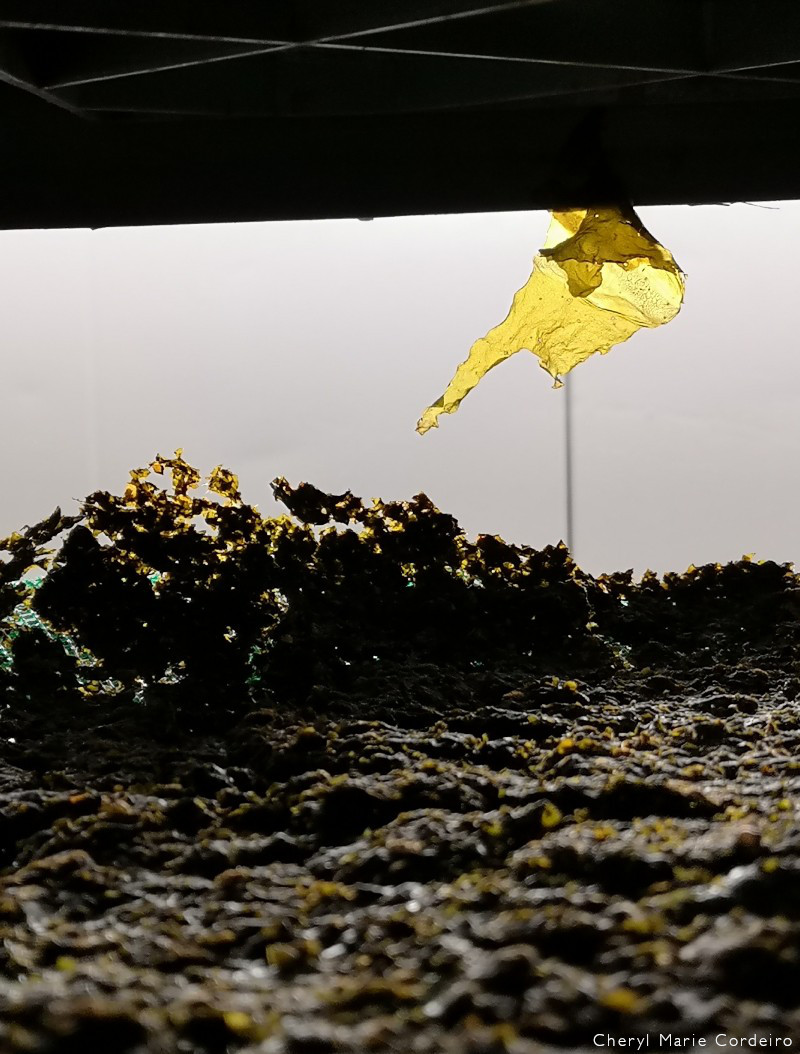Air dried seaweed at Ocean Rainforest, Færoe Islands 2019. Ocean Rainforest produces high quality seaweed of various types. The seaweed are farmed in the pristine offshore waters of the Færoe Islands. Their products include Saccharina Latissima (sugarkelp/kombu/breiðbløðkutur sukurtari), Alaria Esculenta (winged seaweed/wakame), Laminaria Digitata (tangæe / oarweed/tarablað) and Palmaria Palmata (dulse/dilisk/søl).(Ocean Rainforest, 2010)
Text & Photo © JE Nilsson & CM Cordeiro 2019
Ecology values of seaweed aquaculture
The use of marine algae/seaweed in culinary presentations and gastronomy in Far Eastern countries such as China, Japan, South Korea and parts of Southeast-Asia is well known. In Scandinavia however, seaweed is mainly associated with humble origins, local coastal activities and historical narratives (Efstathiou & Myskja, 2018). In Norway, seaweed was regularly washed ashore during storms, making harvest of the seaweed accessible for use for animal feed and as soil fertiliser (Indergaard, 2010). During the 18th century in the Scandinavian coastal regions, seaweed was also gathered to produce potash and soda ash that were used for cleaning and to make glass. The alginate industry blossomed in the 1960s in Norway when seaweed was harvested manually from the coast for applications in the food industry as a thickening agent.
Moving on about fifty years to modernity, the past decade has witnessed a (re)discovery of seaweed as a natural resource and raw produce. Seaweed is increasingly studied and understood for its fundamental grounding in ecological values that are much needed in the management of today´s natural resources and marine environments. Seaweed is proving to be not only a valuable industry resource with potential applications as biofuel that can help mitigate carbon dioxide emissions in terms of substitution for fossil fuels (Milledge, Smith, Dyer, & Harvey, 2014), but it can also help with global adaptation to the effects of extreme weather condition in a warming hemisphere, for example, by damping wave energy and protecting shorelines, and by increasing oxygen supply in the waters that mitigate ocean acidification (Duarte, Wu, Xiao, Bruhn, & Krause-Jensen, 2017).
To that extent, the aquaculture of seaweed is the fastest-growing component of global food production (FAO, 2018). And while that is good news, considering the increasing market demand and applications of seaweed in various industries, seaweed aquaculture is currently constrained due to competition for suitable aquaculture areas. Other challenges that seaweed aquaculture faces are inadequate engineering systems capable of coping with rough offshore conditions, such as the type of weather we encountered for the day, on our way to visit Ocean Rainforest, as well as the lack of environmentally friendly automated harvesting and processing technologies.
